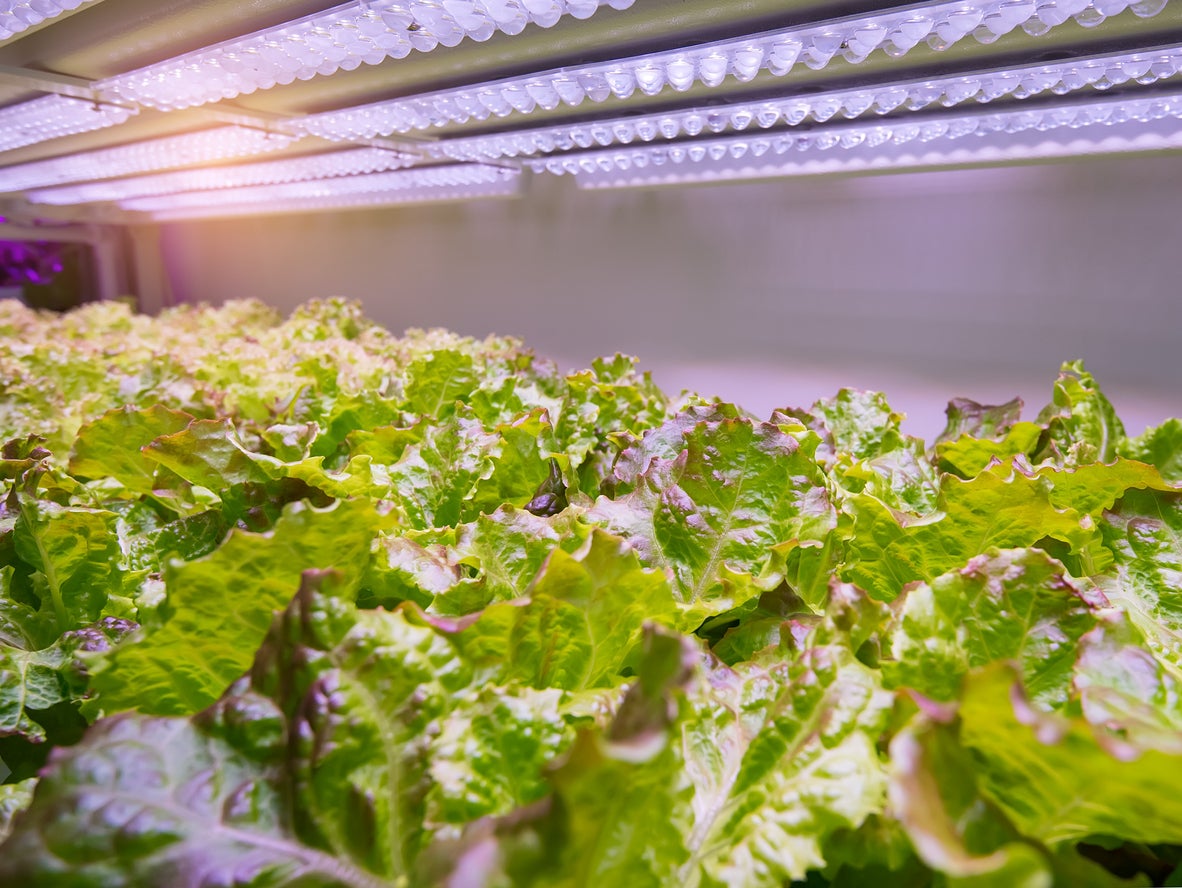Grow Light Terminology: Basic Grow Light Information For Newbies

For those without a greenhouse or solarium (sunroom), starting seeds or generally growing plants inside can be a challenge. Giving the plants the proper amount of light can be a problem. This is where grow lights become a necessity. That said, for those new to greenhouse grow lights, grow light terminology can be confusing, to say the least. Fear not, read on to learn some common grow light terms and other useful info that will serve as a future greenhouse lighting guide.
Grow Light Information
Before you go out and spend a bunch of money on grow lights, it is important to understand why grow lights are almost indispensable. Plants need light in order to photosynthesize, this much we all know, but many folks don’t realize that plants absorb different spectrums of light than just what is visible to people. Plants mostly use wavelengths in the blue and red parts of the spectrum.
There are two major types of bulbs available, incandescent and fluorescent. Incandescent lights are less preferable because they emit plenty of red rays but not of blue. Plus, they produce too much heat for most types of plants and are approximately a third less efficient than fluorescent lights.
If you want to keep things simple and use only one type of bulb, fluorescents are the way to go. Cool white fluorescent bulbs are energy efficient and emit spectrums of red as well as orange, yellow, green, and blue rays, but aren’t quite up to supporting plant growth. Instead, opt for fluorescent bulbs made for growing plants. While these are expensive, they have higher emissions in the red range to balance the blue output.
To lower your cost without compromising growth, use a combination of specialty greenhouse grow lights as well as cool white fluorescent bulbs - one specialty grow light to each one or two cool white lights.
Greenhouses will also often use high-intensity discharge (HID) lamps that have a high light output with little shading or light-emitting diode (LED) lamps.
Grow Light Terminology
Other things to consider when preparing to use grow lights are voltage, PAR, nm, and lumens. Some of this can get a bit complex for those of us who are not scientists but bear with me.
Gardening tips, videos, info and more delivered right to your inbox!
Sign up for the Gardening Know How newsletter today and receive a free copy of our e-book "How to Grow Delicious Tomatoes".
We’ve established that people and plants view light differently. People see green light most easily while plants utilize red and blue rays most effectively. People need a fairly small amount of light to see well (550 nm) while plants use light between 400-700 nm. What does nm refer to?
Nm stands for nanometers, which refer to wavelength, specifically the visible section of the color spectrum that is red. Because of this difference, measuring light for plants must be done in a different way than measuring light for humans via foot candles.
Foot candles refer to the intensity of the light at a surface, including the area (lumens/sq. ft). Lumens refers to the output of a light source which is calculated along with the total light output of a typical candle (candela). But all of this doesn’t work to measure light for plants.
Instead, PAR (Photosynthetically Active Radiation) is calculated. The amount of energy or particles of light hitting a square meter per second must be measured by calculating micromoles (one-millionth of a mole which is a HUGE number) per square meter per second. Then the Daily Light Integral (DLI) is calculated. This is the accumulation of all the PAR received during the day.
Of course, getting the lingo down regarding grow lights isn’t the only factor affecting a decision. Cost is going to be a huge concern for some people. To calculate lighting costs, the initial capital cost of the lamp and the operating cost must be compared. The operating cost can be compared to the light output (PAR) per kilowatt of total electricity used, including that used for the ballast and cooling system, and the power supply.
If this is getting too complex for you, don’t despair. There are some terrific greenhouse lighting guides on the internet. Also, talk to your local extension office for information as well as any local or online purveyors of greenhouse grow lights for additional info.

Amy Grant has been gardening for 30 years and writing for 15. A professional chef and caterer, Amy's area of expertise is culinary gardening.
-
 12 Lush Alternatives To A Lawn For Sustainable Spaces
12 Lush Alternatives To A Lawn For Sustainable SpacesAlternatives to a lawn are beautiful and also beneficial to your local ecosystem and its pollinators. Explore our top picks for plants to replace grass.
By Tonya Barnett
-
 Types Of Tomatoes Explained: Explore The Many Wonderful Shapes, Colors, Flavors, & Best Uses
Types Of Tomatoes Explained: Explore The Many Wonderful Shapes, Colors, Flavors, & Best UsesThe world of tomato varieties is vast and fascinating. Learn about the key types to grow in your garden, tailored to your preferences and space.
By Amy Grant